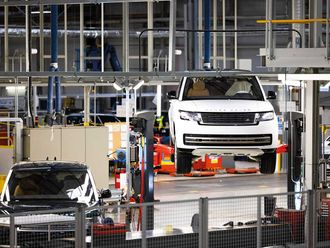
This region is experiencing some pretty wild activity right now with the uprising against long-established and deeply embedded leaders.
Clearly having reached the point of frustration millions of people have taken to the streets with some amount of confidence demanding that the leaders step down.
We are past the point of caution as this leadership dilemma has reached historic magnitude and all leaders need to understand what it means for them.
Scholars say that autocratic leadership is the least desirable style when it comes to building trusting relationships because they hypothesise that when one person is in complete control no one is permitted to make any suggestions or offer any opinions, no matter how it may benefit the group.
In other words, autocratic leadership equates to command and control. Autocratic leadership can most accurately be translated as "a person with unlimited power or authority".
Although many people immediately assume and even argue that autocratic leadership is a bad style and should not be used, is it really that bad? Of course it is when it takes the extreme form of dictatorship.
Decision making
But we need to be careful not to confuse autocratic leadership with totalitarianism. In these extreme instances the leader does not involve others in the decision-making process and may even resort to force, manipulation, or even threats to accomplish their goals.
But, not all autocratic leaders are bad. We can look across the region and see excellent examples of the collective benefits of autocratic leadership.
In reality most family businesses, which make up 80-90 per cent of all businesses in the world, rely on the autocratic style of leading. In the workplace there are some real benefits from an autocratic style, especially in fast-growth and emerging markets that are ambiguous, volatile, uncertain and rapidly changing.
When operating conditions call for urgent action, the autocratic style of leadership may be the best style to enact.
So if in some instances it is brilliant and in others it is dreadful, what makes the difference?
The leader's motive is the core indicator as to how autocratic leadership will be exhibited — meaning, is the leader acting for the betterment of all or the fulfilment of their ideal at all cost?
Danger
This danger is clear when a leader projects that their knows what is better for everyone else even when the masses speak with unified contrarian voice. The litmus test for motive comes down to "self or others?"
The second difference is the leader aligning their style with the needs of the moment, environment, and followers. Interestingly, many individuals have already worked for an autocratic leader, and therefore have little trouble adapting to that style.
Actually employees who are working in the private sector for the first time usually prefer an autocratic style and like the clarity that comes with being told exactly what to do. There is a preference for a clear and strong approach to leadership, but not to a dictatorial style.
Leadership is essential for achieving results and in more complex and dynamic environments leadership has a great impact (for sure this region qualifies for being complex and dynamic). You should think about the benefits of strong leadership and where the balance is between success and totalitarianism.
The writer is Vice-President of Leadership Solutions at Kenexa.












